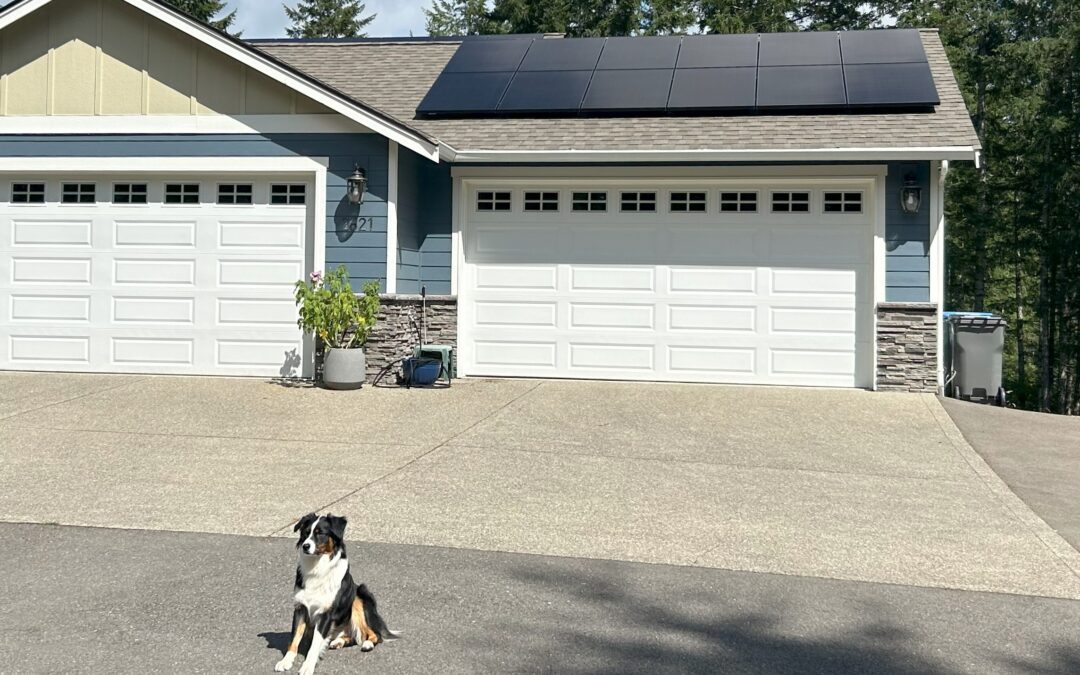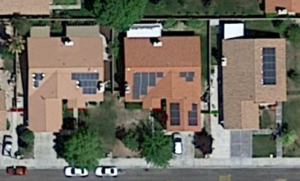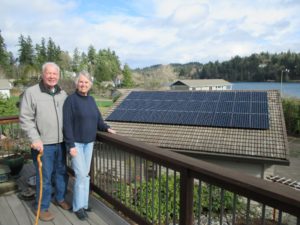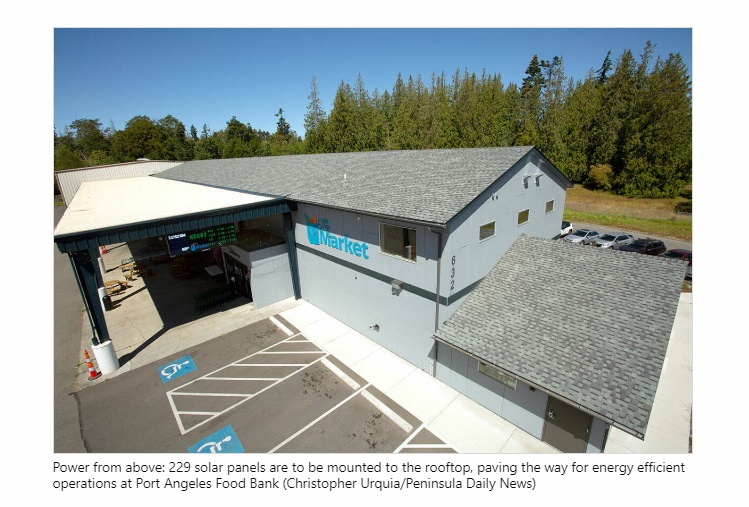
PSE’s Flex Program
Puget Sound Energy (PSE) is the state’s largest utility and has been showing some innovative thinking in terms of transparency and involving customers in demand response. Demand response is a term that describes altering energy usage to match availability. As we phase out polluting fossil fuels, we will increase electrification and install more renewable energy sources on the grid. Those renewable energy projects will be both utility scale and smaller distributed generation like the solar arrays on our clients’ roofs. There are benefits to everyone that participates in this transition, and there will be some new challenges as well.
PSE is taking advantage of current technology to communicate with their customers to give them the option to participate in several different ways. In the simplest form, PSE texts customers and lets them know there is an incentive to decrease your power consumption at the moment. Customers get paid to enroll in the program and get paid for the savings they can enact during what PSE calls “Flex Events.” Additional aspects of the program can provide rebates and incentives for using “smart” thermostats, EV’s, or even batteries which can be controlled by the utility to shift the timing of demand or to allow PSE to utilize stored energy. Learn more from PSE here https://www.pse.com/en/rebates/PSE-flex
If you are a PSE customer, there is no downside to enrolling in the alerts, so I would certainly say to go ahead with that at least. You can learn more for yourself about the details of the other aspects of the program.
Reasons for the Flex Program
PSE has said they don’t implement the Flex protocols in advance of outages necessarily, but that it is more of a cost savings measure at times when energy is more expensive. Daniel Schrager just had a nice article in The Olympian here (paywall, 24 hour free access for registering) https://www.theolympian.com/news/state/washington/article298205253.html
One of the main underlying trends our region is facing is a decline in available hydro power due to declining precipitation and snow packs. There is no doubt we are seeing the climate gradually changing, even if there is still discussion regarding the complexity surrounding the causes of global climate change and the effects we see here in the Pacific NW. The main reason we have been motivated to create Power Trip Energy and to continue encouraging clean local rooftop solar is to mitigate our contribution to CO2 into the atmosphere, while helping our clients save money. Even if one does not think there is conclusive evidence showing correlation between human carbon emissions and decreased snowpack feeding our hydro system, it seems that it makes a lot of sense to err on the side of caution and avoid them as much as possible.
Another dominating trend we will see is a transition to clean renewable energy to provide the additional power we need for electrification of homes and vehicles, and for new energy hungry industries such as the increase in data centers for our information technologies. You will be participating in this change whether you take personal action or not. The question will be whether you pay for someone else to provide that new power, or whether you invest in producing it yourself. If this resonates with you, we’d be happy to talk to you about how you can effectively and economically make solar power on your own roof.
by Andy Cochrane | Jan 14, 2025
I recently read about two towns in California that have mandated the installation of grid-tied PV systems on newly constructed homes. This government legislation illustrates to me how far residential solar power has come. Just a couple of decades ago, solar power brought to mind one solar panel powering a flickering light bulb hanging from the ceiling of a wood cabin. And now City Councils are insisting upon solar! The passing of these laws leaves me wondering if legally mandating solar installations is a growing trend and what will this mean for the future?
The town of Sebastopol has about the same population as Port Townsend, Washington, around 8000 souls. In 2013, this quirky and decidedly liberal town passed a law requiring solar panels on all new buildings and additions with nearly unanimous support from its City Council. According to a May 10, 2013 article by Miranda Green of The Daily Beast, “Sebastopol’s ordinance orders that the solar systems must provide 2 watts of power per square foot or offset 75 percent of the structure’s electricity use.” So a humble 3.6 KW system would be required on an 1800 sq ft home.

Lancaster, California was the first city in the United States to mandate solar panels on new construction. Photo: Map data ©2016 Google
Unlike Sebastopol, Lancaster, California is largely politically conservative. It has a population of around 150,000, about the same as the Washington State counties of Clallam, Jefferson, and Mason combined. According to Green, Lancaster was the first city in the United States to mandate solar panels on new construction. The city council was unanimous in approving a zoning code amendment requiring housing developers to add solar power systems on all new homes. This new code was initiated by the Republican mayor, R. Rex Parris, who wanted to make Lancaster the “solar capital of the universe.” The satellite photo of Lancaster above shows a segment of a housing development impacted by the legislation.
A Marketplace.org article posted on August 11, 2016, by Jed Kim addresses the question of mandating solar power. According to Kim, “Santa Monica recently approved an ordinance making rooftop solar systems mandatory for all new construction and major renovations.” San Francisco is planning on implementing similar legislation in 2017. Dean Kubani, Santa Monica’s chief sustainability officer, explained that the ordinance was approved to aid the city’s efforts to reduce emissions, “We, like a lot of other cities, are looking at greenhouse gas impacts and carbon impacts, and we’re trying to figure out how can we become carbon neutral.”
In the greentechmedia.com article, What It Really Means to Require Solar Panels on All New Buildings (June 20, 2016), Julian Spector writes, “Other municipalities have already reached out to San Francisco for more information about the policy, including Boston, Washington, D.C., Cambridge and Palo Alto.” Spector concludes, “The endgame will be cities where rooftop solar isn’t a personal challenge for a homeowner, it’s just one of many components expected of a market-ready property.”
It seems clear that mandating solar power is indeed a growing trend. However, I am hesitant to assert that solar power should be mandated for all new construction across the country. All too frequently, legislation that is meant to help people ends up presenting unintended consequences and sometimes does more harm than good. What are the possible unintended consequences of legislating solar installations? How successful are other incentive programs and commercial promotions in encouraging people to adopt solar power? If we wait for the market to come around to solar, will it happen fast enough to mitigate our climate crisis? What do you think? What questions do you have about this topic or other issues with solar power?

Proud new owners of a Power Trip Energy solar array, 2016
by Andy Cochrane | Sep 13, 2016



